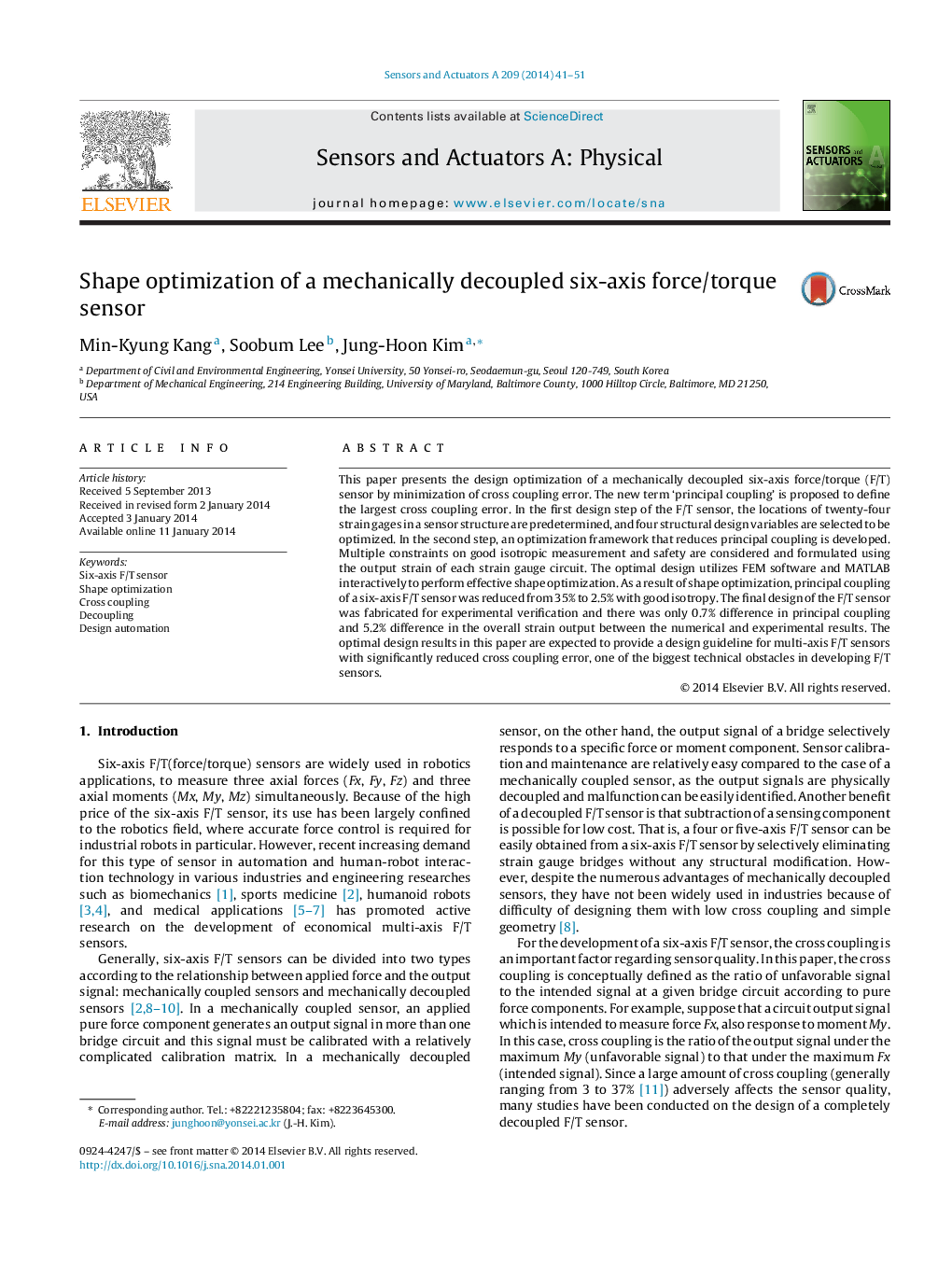| Article ID | Journal | Published Year | Pages | File Type |
|---|---|---|---|---|
| 737265 | Sensors and Actuators A: Physical | 2014 | 11 Pages |
•Mechanically decoupled six-axis F/T sensor can be effectively designed by optimization framework.•The ‘principal coupling’ is proposed to define the largest cross coupling error to be minimized.•Loading test on fabricated sensor with optimal geometry verifies the optimization framework.•Maximum coupling of 3.2% was obtained in a high moment to force ratio (0.1 Nm/N) specification.
This paper presents the design optimization of a mechanically decoupled six-axis force/torque (F/T) sensor by minimization of cross coupling error. The new term ‘principal coupling’ is proposed to define the largest cross coupling error. In the first design step of the F/T sensor, the locations of twenty-four strain gages in a sensor structure are predetermined, and four structural design variables are selected to be optimized. In the second step, an optimization framework that reduces principal coupling is developed. Multiple constraints on good isotropic measurement and safety are considered and formulated using the output strain of each strain gauge circuit. The optimal design utilizes FEM software and MATLAB interactively to perform effective shape optimization. As a result of shape optimization, principal coupling of a six-axis F/T sensor was reduced from 35% to 2.5% with good isotropy. The final design of the F/T sensor was fabricated for experimental verification and there was only 0.7% difference in principal coupling and 5.2% difference in the overall strain output between the numerical and experimental results. The optimal design results in this paper are expected to provide a design guideline for multi-axis F/T sensors with significantly reduced cross coupling error, one of the biggest technical obstacles in developing F/T sensors.
